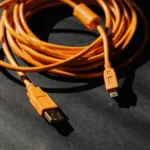Message ID: MC974362
We are rolling out fundamental Secure/Multipurpose Internet Mail Extensions (S/MIME) support for primary accounts in new Outlook. With this new feature, new Outlook will start supporting sending and reading signed and encrypted emails.
In new Microsoft Outlook, this option is available in Options > More Options.
This message is associated with Microsoft 365 Roadmap ID 397891.
[When this will happen:]
General Availability (Worldwide): We began rolling out mid-December 2024 and expect to complete by late January 2025.
General Availability (GCC): We will begin rolling out early February 2025 and expect to complete by mid-February 2025.
General Availability (GCC High, DoD): We will begin rolling out mid-February 2025 and expect to complete by late February 2025.
[How this will affect your organization:]
If your organization is not using New Outlook this will not impact you.
If your organization does not have S/MIME setup for your users, this will not impact you.
If your organization is currently using S/MIME, you will soon see controls to apply S/MIME encryption when signing into new Outlook. Similarly, you will be able to verify, sign, decrypt, and reply to S/MIME emails.
[What you need to do to prepare:]
This rollout will happen automatically with no admin action required. You may want to notify your users about this change and update any relevant documentation as appropriate.
Users with S/MIME certificates on their machine or Smart Card will be able to use this new feature in new Outlook.
Learn more: Overview of the new Outlook for Windows
Source: Microsoft
![Secure/Multipurpose Internet Mail Extensions encryption support in new Outlook for Windows [MC974362] 1 Secure/Multipurpose Internet Mail Extensions encryption support in new Outlook for Windows [MC974362]](https://mwpro.co.uk/wp-content/uploads/2024/08/pexels-bess-hamiti-83687-36487-1024x683.webp)




![Microsoft Teams: Filter between active and archived teams in Shifts app schedules [MC974351] 6 Microsoft Teams: Filter between active and archived teams in Shifts app schedules [MC974351]](https://mwpro.co.uk/wp-content/uploads/2024/08/pexels-alljos-866351-150x150.webp)
![Microsoft Teams: Enhanced confidentiality in voicemail greetings [MC974356] 7 Microsoft Teams: Enhanced confidentiality in voicemail greetings [MC974356]](https://mwpro.co.uk/wp-content/uploads/2024/08/pexels-noellegracephotos-906018-150x150.webp)
The recent rollout of Secure/Multipurpose Internet Mail Extensions (S/MIME) support in the new Outlook for Windows is set to bring a wave of change for both admins and users alike. This feature will enable users to send and read signed and encrypted emails, enhancing the security and integrity of communications.
For admins, this update is a double-edged sword. On one hand, there’s no need for additional configuration or heavy lifting—this rollout happens automatically, which is a relief. However, it does put the onus on them to ensure that users are aware of this new functionality. A little proactive communication can go a long way; think of it as giving your team a friendly nudge rather than a full-on alarm bell. It might also be a good time to update any documentation to reflect these changes, so users feel empowered rather than perplexed.
As for users, this update is likely to be met with cheers. With S/MIME support, they can now enjoy a more secure email experience. Imagine being able to send emails with the confidence that they’re encrypted and signed—it’s like sending a secret message with an invisible ink pen! Plus, the ease of accessing these features through the new Outlook interface should make the transition smooth. For those already using S/MIME, the integration means they can continue their secure practices without a hitch.
The overall impact? Significant! This change not only bolsters security but also promotes a culture of awareness around email safety. It encourages everyone to think more critically about their digital communications.
In conclusion, while the transition to S/MIME in Outlook may seem like just another update, it’s a game-changer for secure communications. I encourage everyone to share their thoughts on this—how do you feel about the increased security? Are there any concerns? Let’s hear your comments below!
For more insights and updates, don’t forget to check out additional posts on mwpro.co.uk. Your input could spark a lively discussion!